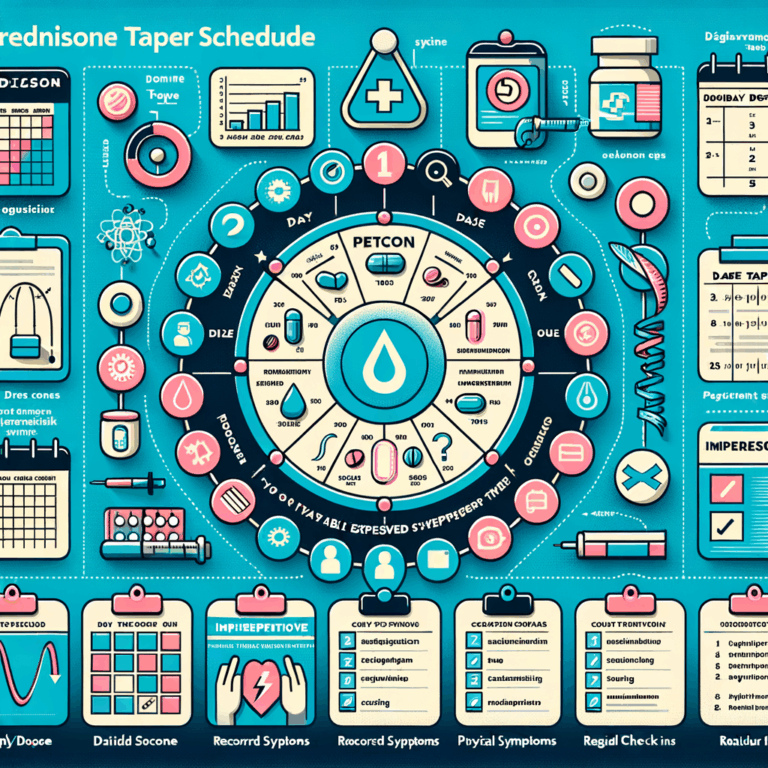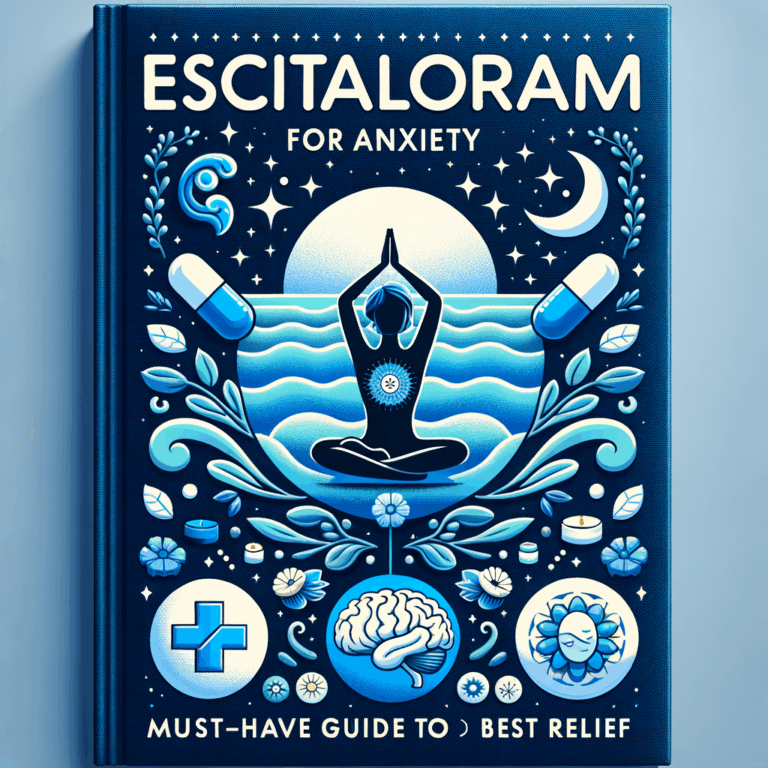
- Introduction: Why Duloxetine for Nerve Pain Matters
- How Duloxetine Works: The Science in Simple Terms
- How this differs from other pain medicines
- Conditions Where Duloxetine for Nerve Pain Helps
- Diabetic Peripheral Neuropathy (DPN)
- Fibromyalgia and Mixed Pain Syndromes
- Evidence of Effectiveness: What Studies Show
- Magnitude of benefit
- Dosing and Administration: Practical Guide
- Typical dosing table
- How long to try duloxetine
- Side Effects and How to Manage Them
- Common side effects and tips
- Serious warnings
- Drug Interactions and Important Precautions
- Common drugs to watch for
- How clinicians manage interactions
- Who Should Avoid Duloxetine
- Special caution in elderly patients
- Monitoring While on Duloxetine
- Checklist of things to monitor
- Comparing Duloxetine with Other Nerve Pain Treatments
- When to combine therapies
- Real-World Tips for Better Outcomes
- Practical daily tips
- Alternatives When Duloxetine Is Not Suitable
- Cost, Access, and Generic Options
- Prescription tips
- Patient Stories: What Real People Experience
- Common themes in patient feedback
- When to Stop Duloxetine
- Signs you should contact your clinician
- Practical Q&A: Common Patient Concerns
- Conclusion: Is Duloxetine Right for You?
- Frequently Asked Questions (FAQs)
- References
Introduction: Why Duloxetine for Nerve Pain Matters
Nerve pain can steal comfort and disrupt daily life. People describe it as burning, stabbing, or electric shocks. In many cases, standard painkillers do not help. As a result, doctors often look to other drugs. Duloxetine for nerve pain has become a common choice.
This medication offers a different approach than opioids or NSAIDs. It targets the brain’s pain pathways and helps dampen abnormal nerve signals. Consequently, many patients gain meaningful relief. In the following sections, I explain how duloxetine works, which conditions it treats, its benefits, risks, and practical tips for using it safely.
How Duloxetine Works: The Science in Simple Terms
Duloxetine belongs to a class called serotonin-norepinephrine reuptake inhibitors (SNRIs). It raises levels of two key neurotransmitters: serotonin and norepinephrine. These chemicals help regulate mood and pain perception. By increasing their availability, duloxetine reduces the transmission of pain signals.
Importantly, duloxetine does not act on injured nerves directly. Instead, it changes how the central nervous system processes pain. As a result, it can ease chronic, neuropathic pain that resists other treatments. In short, duloxetine helps the brain say “turn down” to persistent pain messages.
How this differs from other pain medicines
Unlike opioids, duloxetine does not primarily bind to opioid receptors. Therefore, it carries lower addiction risk. Compared with tricyclic antidepressants, it tends to cause fewer side effects like dry mouth or severe sedation. Meanwhile, it works better for some nerve pain types than common anti-inflammatories. Thus, clinicians choose it when those options fail.
Conditions Where Duloxetine for Nerve Pain Helps
Doctors prescribe duloxetine for several nerve-related conditions. The most common include diabetic peripheral neuropathy (DPN), fibromyalgia, and chronic low back pain with a neuropathic component. Researchers also study it for chemotherapy-induced neuropathy and post-herpetic neuralgia.
Each condition involves nerve signaling changes that duloxetine can modulate. However, not everyone benefits equally. Therefore, doctors tailor treatment to the individual. They consider symptom type, severity, other health conditions, and current medicines.
Diabetic Peripheral Neuropathy (DPN)
DPN affects many people with long-standing diabetes. It often causes burning in the feet and hands, worse at night. Clinical trials show duloxetine reduces pain scores and improves quality of life in DPN. For this reason, many guidelines list it as a first-line option.
Fibromyalgia and Mixed Pain Syndromes
Fibromyalgia features widespread pain, fatigue, and sleep issues. Duloxetine can ease pain and improve mood in people with fibromyalgia. Likewise, in mixed pain syndromes that include nerve pain features, duloxetine may help reduce overall pain.
Evidence of Effectiveness: What Studies Show
Multiple randomized controlled trials support duloxetine for nerve pain. For diabetic neuropathy, studies found significant pain reduction versus placebo. Patients often report better sleep and function as well. Meta-analyses confirm modest to moderate benefits.
For fibromyalgia, trials show duloxetine reduced pain and improved patient-reported global status. Additionally, many people experienced better mental well-being. Meanwhile, evidence for chemotherapy-induced neuropathy is less strong but promising. Researchers continue to investigate its role.
Magnitude of benefit
Clinically meaningful pain relief occurs in a subset of patients. Typically, 30–50% of patients achieve a 50% or greater pain reduction in trials. Therefore, while not a cure, duloxetine often offers real improvement. Doctors weigh this expected benefit against possible side effects when recommending treatment.
Dosing and Administration: Practical Guide
Doctors usually start duloxetine at a low dose and increase slowly. For nerve pain, common regimens begin at 30 mg once daily for one week. Then, they raise the dose to 60 mg once daily. Many studies used 60 mg as a standard effective dose. Some people may need adjustments based on response and tolerance.
If you miss a dose, take it as soon as you remember. However, do not double up to catch up. Always follow the doctor’s schedule. Also, take duloxetine with food if it causes stomach upset. This simple step can reduce nausea.
Typical dosing table
| Condition | Starting Dose | Maintenance Dose | Notes |
|---|---|---|---|
| Diabetic neuropathy | 30 mg daily (1 week) | 60 mg daily | Some patients may try 30 mg if sensitive |
| Fibromyalgia | 30 mg daily (1 week) | 60 mg daily | Higher doses show no consistent added benefit |
| Chemotherapy-induced neuropathy | 30 mg daily | 60 mg daily | Evidence still emerging |
How long to try duloxetine
Doctors often allow 4 to 12 weeks to judge benefit. Early improvement may occur within two weeks for some. However, full effects may take up to six weeks. If you see no real benefit after 12 weeks, clinicians usually consider stopping.
Side Effects and How to Manage Them
Duloxetine causes side effects in some people. Common issues include nausea, dry mouth, sleep changes, and constipation. Most side effects appear early and reduce over time. If side effects persist or worsen, contact your doctor.
More serious risks exist but are less common. These include liver problems, increased blood pressure, and serotonin syndrome when combined with certain drugs. Thus, doctors review your medical history and medicines before starting duloxetine.
Common side effects and tips
– Nausea: Take with food. Smaller doses at first can help.
– Dry mouth: Drink water and chew sugar-free gum.
– Sleep issues: Take dose in morning if insomnia occurs. Take at night if it causes drowsiness.
– Constipation: Increase fiber and water intake. Consider gentle stool softeners.
Serious warnings
Stop duloxetine and seek medical care if you have yellowing skin, dark urine, or severe abdominal pain. Also seek help for chest pain, fast heartbeat, severe agitation, or confusion. These signs suggest rare but serious reactions.
Drug Interactions and Important Precautions
Duloxetine interacts with several medicines. You must avoid combining it with monoamine oxidase inhibitors (MAOIs). Doing so can cause dangerous serotonin syndrome. Also, many other antidepressants, certain pain medications, and migraine drugs raise risk. Therefore, provide a full drug list to your clinician.
Additionally, duloxetine can interact with blood thinners like warfarin. It may alter bleeding risk. Likewise, combining it with alcohol can increase liver stress and sedation. For safety, moderate alcohol or avoid it entirely.
Common drugs to watch for
– MAO inhibitors (e.g., phenelzine, tranylcypromine)
– SSRIs or other SNRIs (e.g., fluoxetine, venlafaxine)
– Triptans for migraines
– Opioids like tramadol
– Anticoagulants like warfarin or NSAIDs
How clinicians manage interactions
Doctors may pause certain medications before starting duloxetine. They also monitor labs like liver function tests and INR for warfarin users. In some cases, they choose alternative options when interactions pose high risk.
Who Should Avoid Duloxetine
Some people should not take duloxetine at all. This group includes those currently using MAOIs. Also, people with uncontrolled narrow-angle glaucoma should avoid it. Those with severe liver disease or heavy alcohol use must not take it due to liver risk.
Pregnant and breastfeeding people need careful discussion. The drug can pose risks during pregnancy and breastfeeding. Clinicians evaluate benefits versus harms and may recommend alternatives.
Special caution in elderly patients
Older adults may face higher side effect risk like falls, hyponatremia, or blood pressure changes. Therefore, doctors start at lower doses and monitor more closely. They also review other medications to reduce interaction risk.
Monitoring While on Duloxetine
Regular monitoring helps catch problems early. Initially, doctors may check blood pressure and liver enzymes. They also assess pain relief and side effects frequently. After stabilization, check-ins might occur every few months.
If you have a history of bleeding or take anticoagulants, clinicians may check clotting tests. Also, report any mood changes, suicidal thoughts, or severe sleep disturbances immediately. These symptoms require prompt medical attention.
Checklist of things to monitor
– Pain severity and daily function
– Blood pressure and heart rate
– Liver function tests (if indicated)
– Signs of serotonin syndrome
– Mood changes or suicidal thoughts
Comparing Duloxetine with Other Nerve Pain Treatments
Several drugs treat nerve pain, including gabapentin, pregabalin, and tricyclic antidepressants. Each has pros and cons. Duloxetine often suits patients who also need mood support. Meanwhile, gabapentinoids help many people but cause dizziness and sedation for some.
Tricyclics like amitriptyline work well but cause more anticholinergic side effects. Meanwhile, topical agents like capsaicin or lidocaine patches target localized pain with fewer systemic effects. Therefore, doctors weigh overall health, side effects, and drug interactions when choosing treatment.
When to combine therapies
Clinicians sometimes combine duloxetine with other agents. For example, they might add a gabapentin for partial responders. Also, they may use topical treatments for localized symptoms. Combining treatments can improve relief but also increases side effect risk. Thus, doctors manage combination therapies cautiously.
Real-World Tips for Better Outcomes
Medication is just one part of managing nerve pain. Lifestyle measures can boost results. Regular, gentle exercise helps nerve health and reduces pain. Likewise, good sleep hygiene and stress reduction support overall recovery.
Follow-up matters. Keep a pain diary to track response and side effects. Share this record with your clinician. This simple habit helps tailor dosing and decide whether to continue duloxetine.
Practical daily tips
– Use a pain and side effect log.
– Communicate openly with your healthcare team.
– Avoid sudden stops; taper under supervision.
– Pair medicine with physical therapy when possible.
Alternatives When Duloxetine Is Not Suitable
If duloxetine proves ineffective or unsafe, several alternatives exist. Gabapentin and pregabalin often help neuropathic pain. Tricyclic antidepressants like nortriptyline may also work. For localized pain, topical lidocaine and high-dose capsaicin patches can reduce symptoms.
Non-drug options also help. Cognitive behavioral therapy, transcutaneous electrical nerve stimulation (TENS), and spinal cord stimulation may benefit some patients. Ultimately, the best approach often combines pharmacologic and non-pharmacologic strategies.
Cost, Access, and Generic Options
Duloxetine is available as a generic medication. Generic options tend to cost less than brand-name versions. Insurance plans often cover duloxetine under standard drug formularies. However, copays vary by plan and location.
If cost is a concern, ask your clinician or pharmacist about assistance programs. Many pharmacies offer discount cards or generic pricing. Also, compare prices across pharmacies or use reputable mail-order services for better rates.
Prescription tips
– Ask about generic duloxetine options.
– Check whether your plan requires prior authorization.
– Consider 90-day fills for stable prescriptions to save money.
Patient Stories: What Real People Experience
Many patients describe significant improvement with duloxetine. They often report less burning and better sleep. For some, the medication restored the ability to walk longer or to sit through daily tasks.
However, others stop due to side effects like nausea or dizziness. Some may only get partial relief. These mixed experiences highlight the need for individualized care. They also underline why trial periods and regular follow-up matter.
Common themes in patient feedback
– Faster relief for mood and pain in combined conditions.
– Early side effects that often fade with time.
– Need for dose adjustment to balance benefit and tolerability.
When to Stop Duloxetine
Stop or taper duloxetine if severe side effects occur. Also consider discontinuation if you gain no benefit after 8–12 weeks. Never stop suddenly. Stopping abruptly can cause withdrawal-like symptoms such as dizziness or mood swings.
Work with your clinician to taper safely. They usually reduce the dose gradually over a few weeks. In some cases, they use slower tapering for long-term users. Always follow their plan.
Signs you should contact your clinician
– Worsening mood or suicidal thoughts
– New severe fatigue or sedation
– Unexplained bleeding or bruising
– Yellowing of the skin or severe stomach pain
Practical Q&A: Common Patient Concerns
Q: Will duloxetine make me sleepy?
A: It can cause drowsiness for some. Yet others feel more alert. If it makes you sleepy, try taking it at night.
Q: Can I drink alcohol while taking duloxetine?
A: Avoid heavy drinking. Alcohol can raise liver risk and worsen side effects.
Q: How long until I feel better?
A: Some people feel relief within two weeks. Full effects may take six weeks.
Q: Can I drive on duloxetine?
A: Be cautious. Do not drive until you know how it affects you.
Q: Is duloxetine addictive?
A: It has low addiction potential. Still, avoid using without a prescription.
Conclusion: Is Duloxetine Right for You?
Duloxetine for nerve pain offers a valuable option. It works by altering pain pathways in the brain and spinal cord. Many people with diabetic neuropathy, fibromyalgia, or mixed nerve pain gain meaningful relief. Also, it helps when other medicines fail.
Yet, duloxetine is not perfect for everyone. Side effects and interactions require careful management. Therefore, discuss your full medical history and medication list with your clinician. With proper monitoring and realistic expectations, duloxetine can become a must-have tool against nerve pain.
Frequently Asked Questions (FAQs)
1. Will duloxetine cure my nerve damage?
No. Duloxetine treats pain symptoms, not the underlying nerve damage. It reduces pain signals and improves function. For nerve healing, doctors focus on managing causes like diabetes.
2. Can I take duloxetine with blood pressure medicine?
Often yes, but you need monitoring. Duloxetine can raise blood pressure in some people. Your clinician will check blood pressure after starting the drug.
3. What happens if I take too much duloxetine?
An overdose can cause severe drowsiness, vomiting, rapid heartbeat, or seizures. Seek emergency care immediately if you suspect an overdose.
4. Does duloxetine interact with herbal supplements like St. John’s Wort?
Yes. St. John’s Wort increases risk of serotonin syndrome. Avoid mixing it with duloxetine.
5. Can children take duloxetine for nerve pain?
Duloxetine is generally not approved for pediatric nerve pain. Clinicians rarely prescribe it for children without clear evidence and careful monitoring.
6. Will duloxetine affect my weight?
Some people gain or lose small amounts of weight. Changes tend to be modest. Report significant changes to your clinician.
7. Is duloxetine safe during pregnancy?
Pregnancy risks exist. Some studies link antidepressants to complications. Discuss risks and alternatives with your obstetrician before starting duloxetine.
8. How long do withdrawal symptoms last when stopping duloxetine?
Withdrawal symptoms may last days to weeks. Slow tapering under medical supervision reduces risk and severity.
9. Can duloxetine treat both nerve pain and depression at the same time?
Yes. Duloxetine treats major depressive disorder and certain pain conditions. It may help dual symptoms in the same person.
10. Are there genetic tests to predict duloxetine response?
Currently, no routine genetic test predicts duloxetine response for nerve pain. Research continues, but clinical decisions rely on patient history and trial outcomes.
References
– U.S. Food and Drug Administration. Cymbalta (duloxetine) label. https://www.accessdata.fda.gov/drugsatfda_docs/label/2013/021427s034lbl.pdf
– Lunn, M. P., Hughes, R. A., & Wiffen, P. J. Duloxetine for treating painful neuropathy, chronic pain or fibromyalgia. Cochrane Database Syst Rev. https://www.cochranelibrary.com/cdsr/doi/10.1002/14651858.CD007115.pub3/full
– Wiffen, P. J., Derry, S., Bell, R. F., et al. Gabapentin for chronic neuropathic pain in adults. Cochrane Database Syst Rev. https://www.cochranelibrary.com/cdsr/doi/10.1002/14651858.CD007938.pub4/full
– Pfizer. Clinical pharmacology and prescribing information for duloxetine. https://www.pfizer.com/products/product-detail/cymbal (Incomplete: max_output_tokens)



